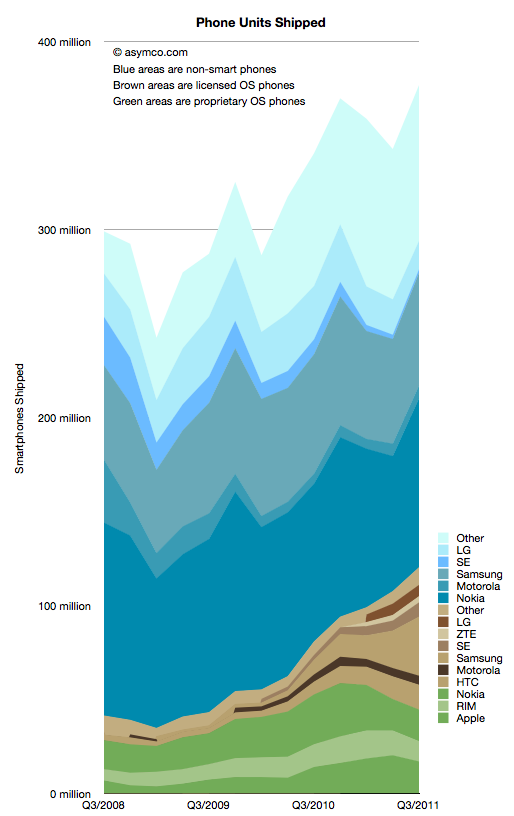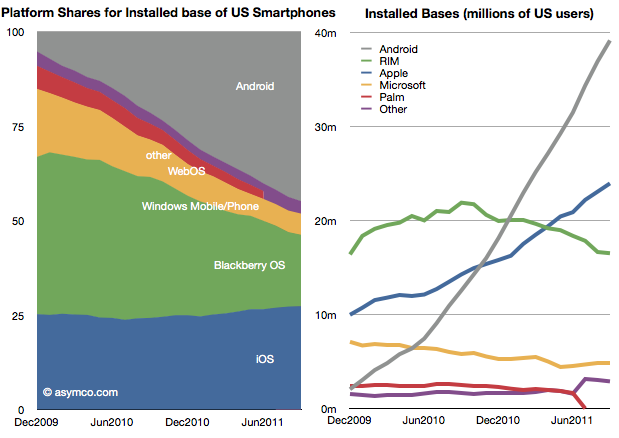
In an address to the audience during a recently concluded seminar entitled “Cloud Vision”, the Honourable Minister of Science, Technology and Tertiary Education (MSTTE), Fazal Karim, said that technology services should take into consideration our mobile penetration. The seminar was held by the Trinidad and Tobago Coalition of Service Industries (TTCSI) and the Trinidad and Tobago Information and Communications Technology Society.
In the Caribbean, there is an average mobile penetration of 62%, compare that to Trinidad and Tobago with a penetration of 141%, which means that many people have more that one phone. This is quite high, but the question is what type of phones; unfortunately we don’t have an answer for that. Based on data gathered from Asymco, 70% of worldwide phone are non-smartphones. See Chart 1.

The US is not much different, with about 65% of phones being non-smartphones (see Chart 2). My guess is that the landscape is no different here.

So if we are to develop applications to take advantage of our mobile penetration, what platform should we develop on? The answer, all depends on who our market is.
If you are building for a niche, with graphic user interfaces (GUI) then you should develop in one of the other OS platforms. I think that Android will have a higher penetration among smartphone users, since many low cost manufacturers are porting the OS onto their hardware as it is free and open source. This may mean though that the OS may become heavily fragmented with developers having a difficult time coding their application to support the many versions out there. iPhone has less fragmentation, but the price premium may keep it out of reach of lower income households. See Chart 3 on the current US OS share and installed base for smartphones.

HTML5 has a lot of promise, but this is dependent on web services being available on mobile phones. This usually comes at a price and may not be available wherever there is cell service. Additionally, not all mobile platforms may natively support HTML5 in the phone’s browser, essentially rendering the application unusable.
If you are building an application for the masses, then the application should be SMS (Short Message Service) based. SMS will work on both smart and non-smart phones, is a familiar interface for many users, and will work reliably once there is cell service.
In conclusion, mobile applications being built for citizens at large, should still operate on the SMS platform. In the foreseeable future, I think it is unlikely that smartphone penetration would overtake non-smartphone penetration. However, skills should be kept up-to-date to take advantage of any changes in policy or technology that allows smartphone use to increase dramatically.


